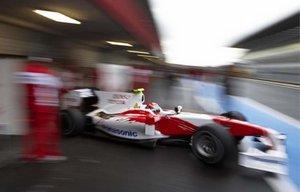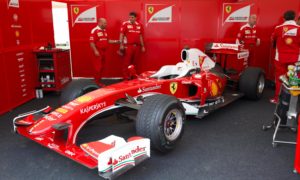 Can Formula One survive without Toyota?
Can Formula One survive without Toyota?
Japanese marque Toyota, one of the biggest carmakers in the world, withdrew from the sport of Formula One earlier this week. Over time their name has become a byword for financial profligacy and underachievement, but what does their departure signify? Will anybody actually miss them?
Toyota entered F1 with much fanfare in the year 2002. They had – and still have – an impressive racing pedigree, honed on rally tracks around the world over a number of years. They were expected, with their theoretically limitless funding, to be able to design and race a winning car within two or three years.
Some qualifying promise in their first season did not translate into results, and at season’s end the talented pair of Mika Salo and Allan McNish were jettisoned in favour of an at best average driver on his way out of the sport – Olivier Panis – and the CART champion Cristiano da Matta. Neither were the talismanic figure the team needed to engineer its way up the grid, although some signs of improvement were present.
For 2004 the Cologne-based team looked as though they were getting serious. Mike Gascoyne was poached from Renault, and many thought his gimlet eye would oversee a raft of technical improvements. It wasn’t to be – the charismatic Englishman fell out with the management after just two seasons, although his 2005 car did take the team’s first second place finish, in the hands of da Matta replacement Jarno Trulli. Ralf Schumacher had also been hired, and his reign at the team characterised its malaise. The German was paid an estimated £15m per year for his efforts, and singularly failed to deliver the goods. 2006 and 2007 were dreadful years for the team, with results basically non-existent.
2008 was much better, but by this time the level of investment that had been put into the team – probably in the region of half a billion dollars – and the spectacular lack of results had started tongues wagging. The early 2009 recession, combined with the global downturn in the sale of Toyota cars, effectively signed the death warrant for Toyota’s F1 involvement. There was little surprise when Timo Glock and Jarno Trulli, journeymen who had nevertheless done a good job for the team, were put on notice towards the end of 2009.
Toyota’s red and white cars had become a familiar sight at the back of the grid. No fan would have been surprised to see a Toyota going out with mechanical failure of a Sunday afternoon, or to see them in their characteristic mid-grid placing, coasting to a tenth place. Perhaps more deserving of criticism was the structure in the team that rewarded mediocrity, particularly with the drivers, and the lack of respect for the decisions of Mike Gascoyne. Able as Pascal Vasselon et al doubtless are, Gascoyne was the one name that stood out, and he should not have been let go.
Their departure clears the way for the Sauber team to enter the sport – a small, determined manufacturer with true racing blood. That is not to say Toyota did not have it – but their way of going about conquering F1 left a lot to be desired








